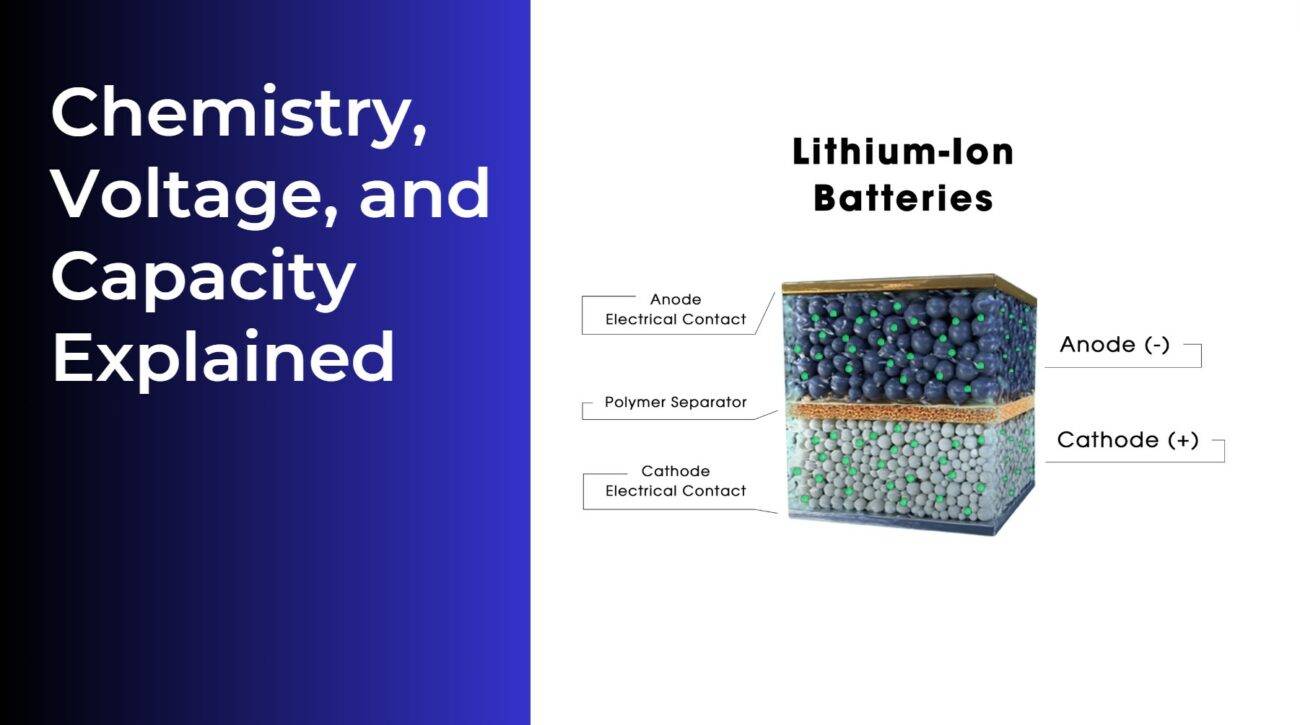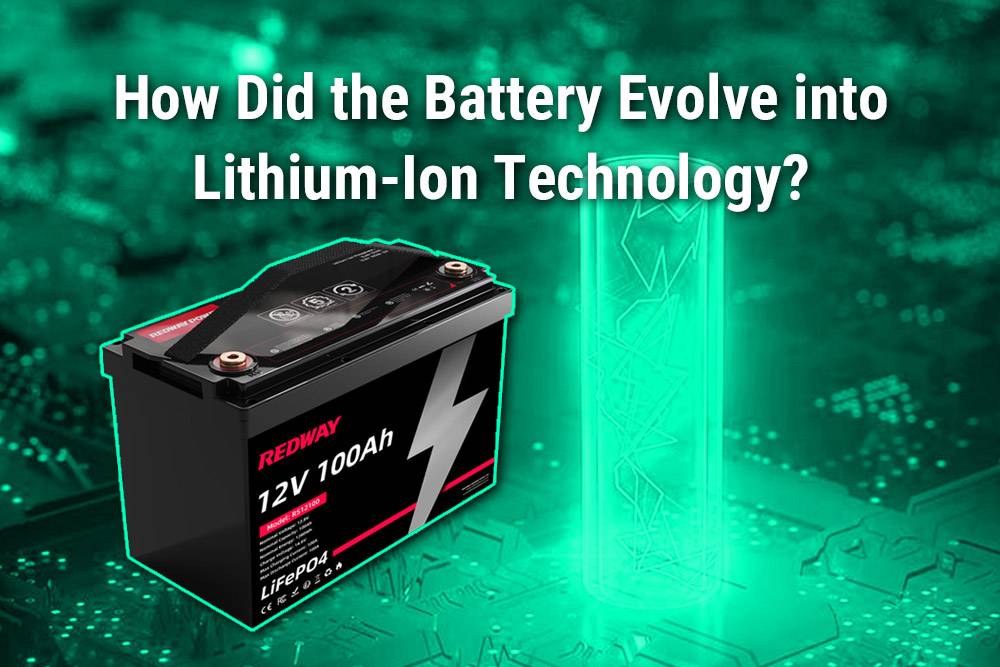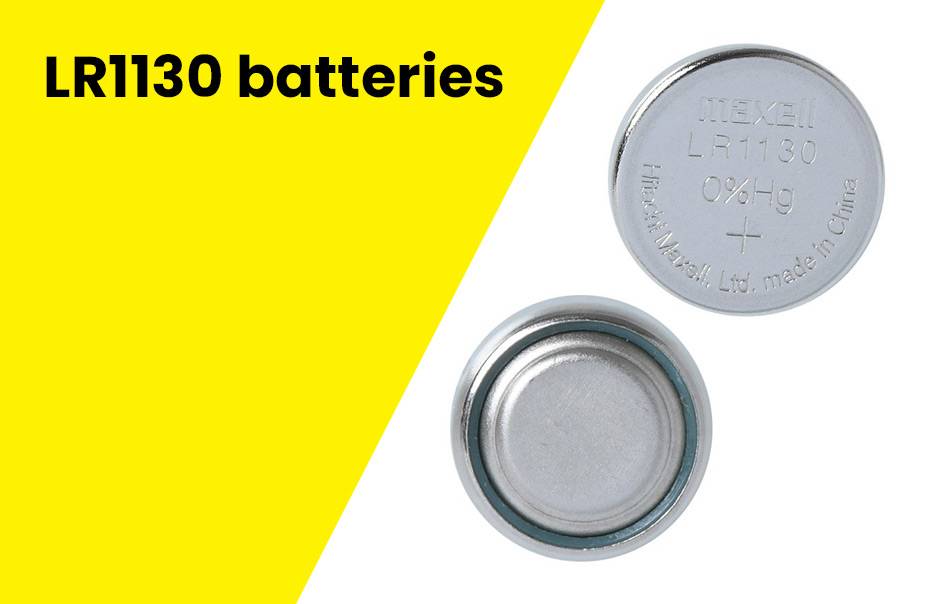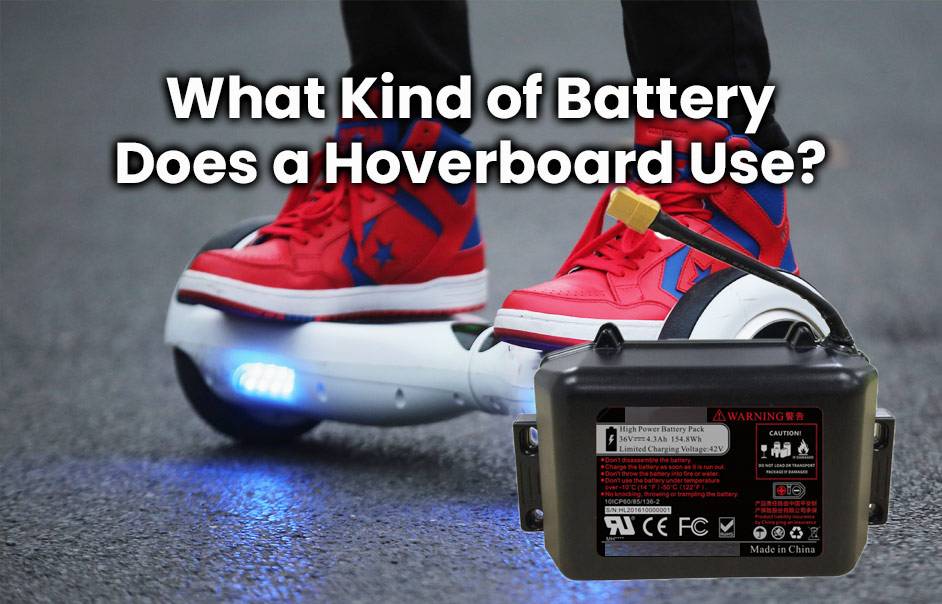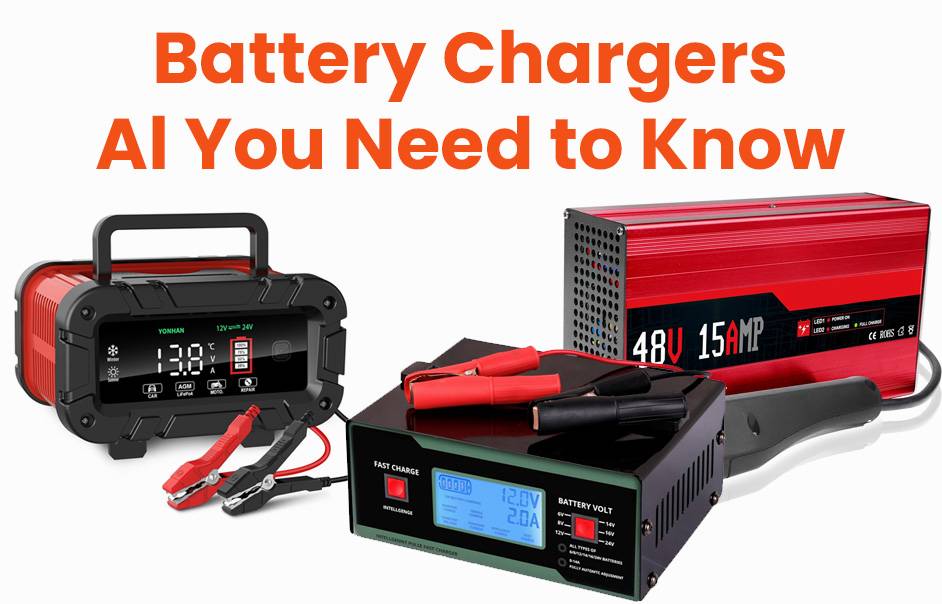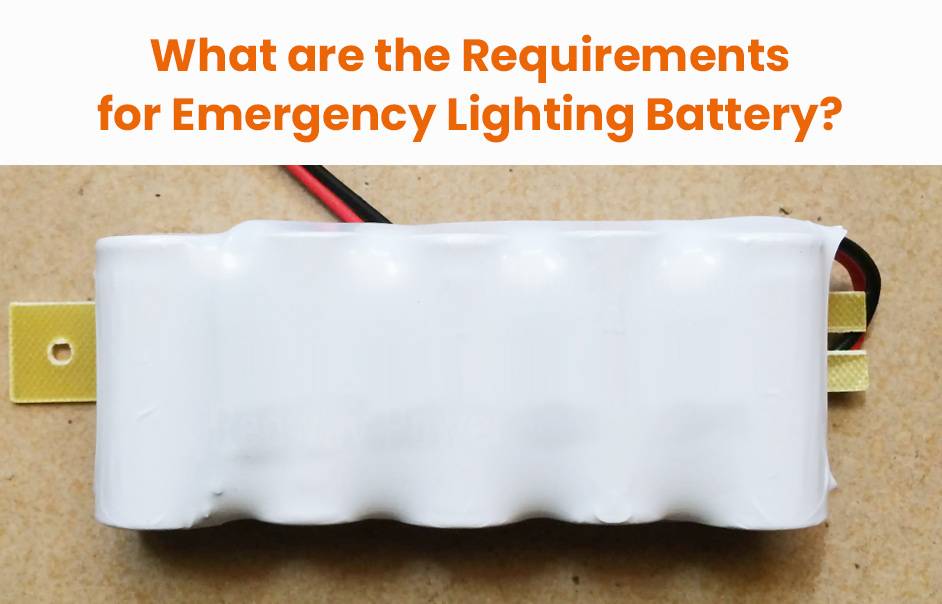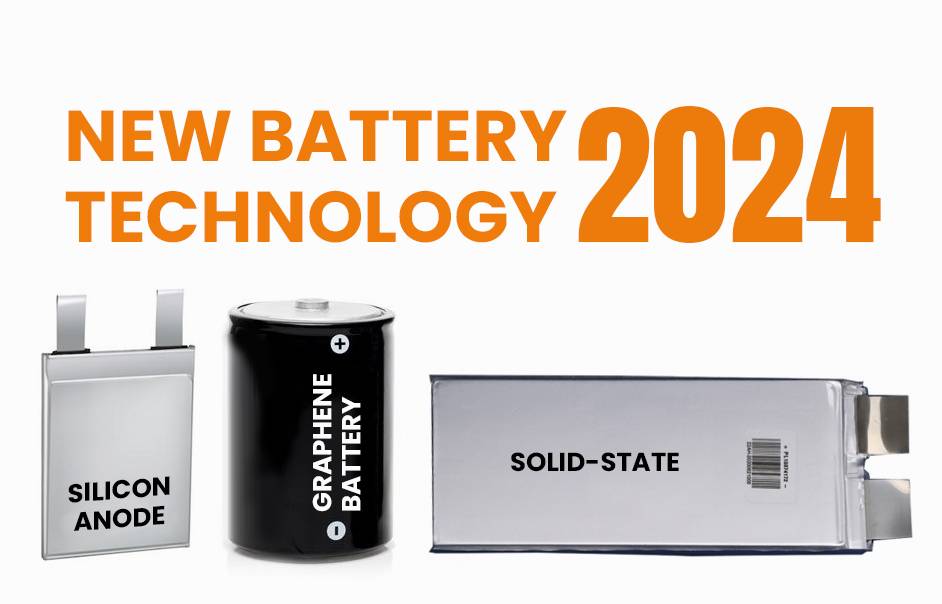- Rack-mounted Lithium Battery
- Golf Cart Lithium Battery
-
Golf Cart Lithium Battery
- 36V 50Ah (for Golf Carts)
- 36V 80Ah (for Golf Carts)
- 36V 100Ah (for Golf Carts)
- 48V 50Ah (for Golf Carts)
- 48V 100Ah (Discharge 100A for Golf Carts)
- 48V 100Ah (Discharge 150A for Golf Carts)
- 48V 100Ah (Discharge 200A for Golf Carts)
- 48V 120Ah (for Golf Carts)
- 48V 150Ah (for Golf Carts)
- 48V 160Ah (Discharge 100A for Golf Carts)
- 48V 160Ah (Discharge 160A for Golf Carts)
-
Golf Cart Lithium Battery
- Forklift Lithium Battery
- 12V Lithium Battery
- 24V Lithium Battery
- 36V Lithium Battery
- 48V Lithium Battery
-
48V LiFePO4 Battery
- 48V 50Ah
- 48V 50Ah (for Golf Carts)
- 48V 60Ah (8D)
- 48V 100Ah (8D)
- 48V 100Ah
- 48V 100Ah (Discharge 100A for Golf Carts)
- 48V 100Ah (Discharge 150A for Golf Carts)
- 48V 100Ah (Discharge 200A for Golf Carts)
- 48V 150Ah (for Golf Carts)
- 48V 160Ah (Discharge 100A for Golf Carts)
- 48V 160Ah (Discharge 160A for Golf Carts)
-
48V LiFePO4 Battery
- 60V Lithium Battery
-
60V LiFePO4 Battery
- 60V 20Ah
- 60V 30Ah
- 60V 50Ah
- 60V 50Ah (Small Size / Side Terminal)
- 60V 100Ah (for Electric Motocycle, Electric Scooter, LSV, AGV)
- 60V 100Ah (for Forklift, AGV, Electric Scooter, Sweeper)
- 60V 150Ah (E-Motocycle / E-Scooter / E-Tricycle / Tour LSV)
- 60V 200Ah (for Forklift, AGV, Electric Scooter, Sweeper)
-
60V LiFePO4 Battery
- 72V~96V Lithium Battery
- E-Bike Battery
- All-in-One Home-ESS
- Wall-mount Battery ESS
-
Home-ESS Lithium Battery PowerWall
- 24V 100Ah 2.4kWh PW24100-S PowerWall
- 48V 50Ah 2.4kWh PW4850-S PowerWall
- 48V 50Ah 2.56kWh PW5150-S PowerWall
- 48V 100Ah 5.12kWh PW51100-F PowerWall (IP65)
- 48V 100Ah 5.12kWh PW51100-S PowerWall
- 48V 100Ah 5.12kWh PW51100-H PowerWall
- 48V 200Ah 10kWh PW51200-H PowerWall
- 48V 300Ah 15kWh PW51300-H PowerWall
PowerWall 51.2V 100Ah LiFePO4 Lithium Battery
Highly popular in Asia and Eastern Europe.
CE Certification | Home-ESS -
Home-ESS Lithium Battery PowerWall
- Portable Power Stations
14500 Battery vs AA Battery, Comprehensive Comparison
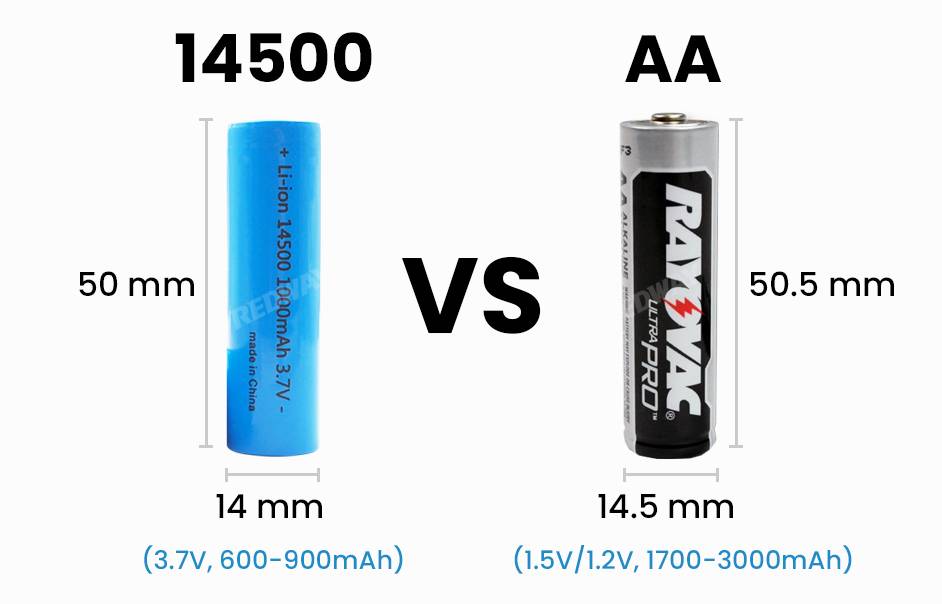
While a 14500 battery shares some similarities with an AA battery, their distinct chemistries result in different voltages. Additionally, 14500 cells might feature built-in protection systems, potentially altering their overall length. This post delves into the disparities between these battery types and investigates the feasibility of interchanging them.
What are 14500 battery?
The 14500 battery is a rechargeable lithium-ion cell, similar in size to an AA battery. With dimensions around 49.2mm length and 13.5mm diameter, it offers 3.6V or 3.7V voltage. These batteries are eco-friendly, rechargeable, and suitable for devices like flashlights and digital cameras. Always check device compatibility due to their higher voltage compared to regular AA batteries.
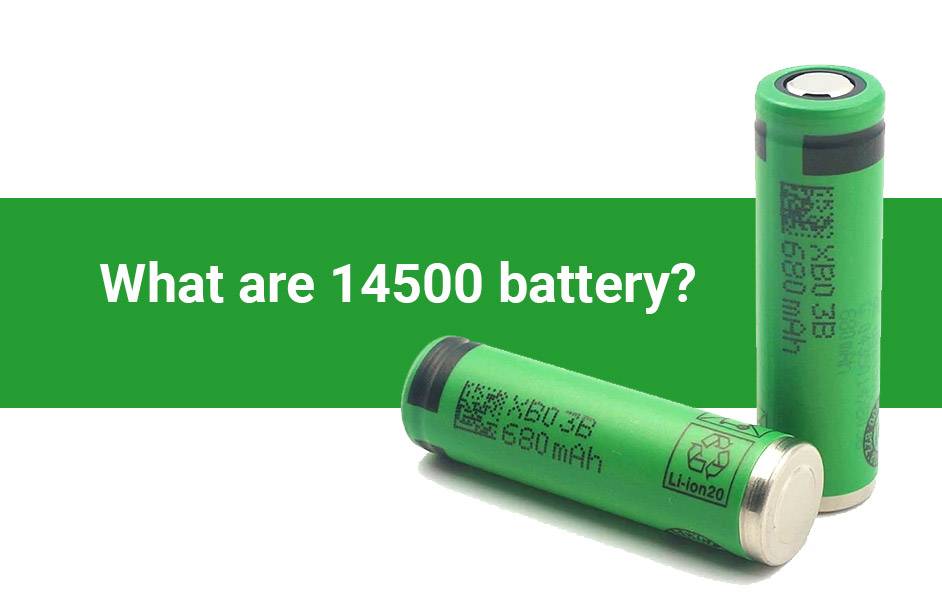
A 14500 battery is a rechargeable lithium-ion cell that is similar in size to an AA battery, but with a higher voltage. With a nominal voltage of 3.7V compared to the typical 1.5V of an AA battery, the 14500 packs more power in a compact form.
These batteries are often used in flashlights, electronics, and other devices where space and energy efficiency are crucial. Due to their lithium-ion composition, they have a higher capacity and can be recharged multiple times.
If you’re looking for a reliable power source that offers increased performance in comparison to traditional AA batteries, the 14500 might just be what you need.
What is an AA battery?
An AA battery, also known as a double-A battery, is a common cylindrical dry cell. It comes in two types: disposable (primary) and rechargeable. AA batteries provide 1.2-1.5V voltage and are widely used in portable electronics like remote controls and digital cameras. Standardized in 1947, they’re essential for powering everyday devices.
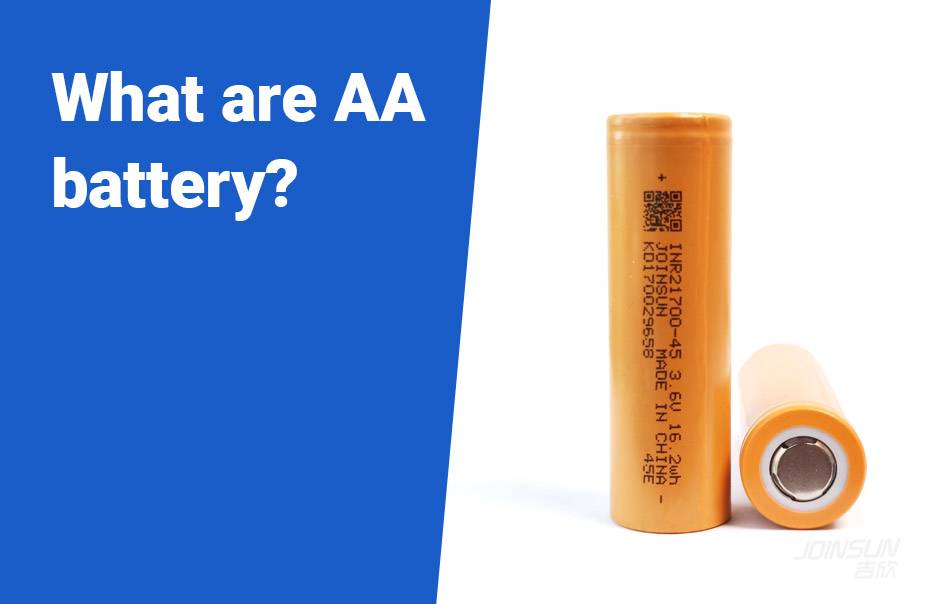
AA batteries are a common household item that powers a wide range of devices. These cylindrical powerhouses are compact and easy to find in most stores, making them a convenient choice for many consumers. The AA designation actually refers to the size and shape of the battery rather than its specific chemistry or voltage.
These batteries typically provide 1.5 volts of power, suitable for powering devices like remote controls, flashlights, and small toys. They come in both disposable and rechargeable options, offering flexibility for different needs.
While AA batteries may not have the highest capacity compared to larger cells, their versatility and widespread availability make them a popular choice for everyday use. Whether you’re replacing batteries in your TV remote or stocking up on spares for emergencies, AA batteries are likely to be a staple in your home.
14500 vs AA Battery in Size, Capacity, Voltage and Lifespan
14500 and AA batteries, despite their cylindrical similarities, differ in size, chemistry, capacity, and voltage output. Comparing the 14500 battery and the AA battery:
- Size: 14500 is shorter than AA.
- Chemistry and Voltage: 14500 uses Li-ion with 3.7V, AA uses alkaline with 1.5V.
- Capacity and Runtime: 14500 has 600-1000mAh, AA has 2000-3000mAh.
- Interchangeability: They can’t swap due to voltage differences. Always check device compatibility for safety.
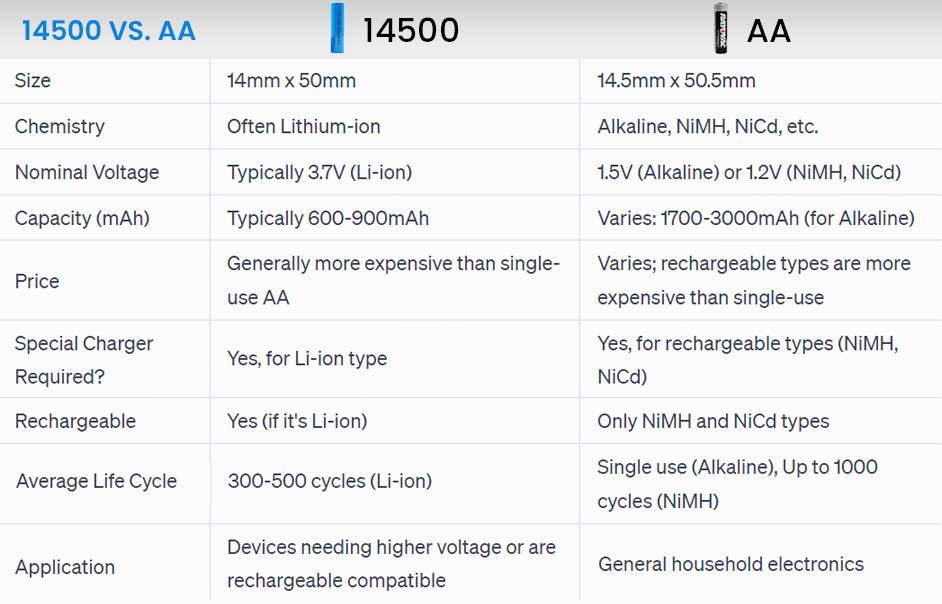
When comparing the 14500 battery and the AA battery, one of the most noticeable differences is their size and shape. The 14500 battery is a lithium-ion cell that is rechargeable, similar in size to an AA battery but slightly taller. On the other hand, traditional AA batteries are typically larger and bulkier compared to the sleeker design of the 14500.
The cylindrical shape of both batteries makes them easy to install in various devices such as flashlights, remote controls, or electronic toys. However, due to its smaller size, the 14500 battery may not fit all devices that require standard AA batteries. It’s essential to consider compatibility when choosing between these two options based on your specific needs.
Additionally, while both batteries serve similar purposes in powering electronics and appliances, their differing dimensions can impact usability in certain gadgets. Whether you opt for the compactness of a 14500 or prefer the versatility of an AA will depend on your device requirements and preferences.
14500 vs AA Battery in Cost
When it comes to comparing the cost of 14500 batteries and AA batteries, there are a few factors to consider. The upfront cost of purchasing these batteries can vary depending on the brand, quality, and quantity you buy.
Generally, 14500 batteries tend to be pricier than AA batteries due to their higher capacity and voltage output. This means that while you may pay more for a 14500 battery initially, you could potentially get longer-lasting power compared to AA batteries.
However, when evaluating the overall cost-effectiveness of these two types of batteries, it’s essential to factor in how often you’ll need to replace them. If you’re constantly swapping out AA batteries because they drain quickly, investing in rechargeable 14500 lithium-ion cells could actually save you money in the long run.
Determining which battery is more cost-effective for your needs will depend on your usage habits and priorities.
14500 vs AA Battery in Applications and Usability
The 14500 battery and AA battery each have their own unique applications and usability. The 14500 cell, due to its higher voltage, is commonly used in devices that require more power output, such as high-drain flashlights or small electronic gadgets. Its compact size makes it ideal for portable electronics where space is limited.
On the other hand, the AA battery is a versatile power source found in numerous household items like remote controls, clocks, toys, and digital cameras. Its widespread availability and compatibility make it a convenient choice for everyday use.
When choosing between the two batteries for your specific application, consider the power requirements of your device and whether size constraints are a factor. Both batteries offer reliable performance but excel in different settings based on their characteristics.
Whether you need long-lasting power for a demanding device or simply want a reliable option for everyday use, understanding the applications and usability of these batteries can help you make an informed decision based on your needs.
14500 vs AA Battery in Durability and Lifespan
When comparing the durability and lifespan of 14500 batteries and AA batteries, several factors come into play.
Firstly, 14500 batteries tend to have a longer lifespan compared to standard AA batteries. This is due to their higher quality construction and superior technology.
Secondly, 14500 batteries are more durable in terms of withstanding repeated charging cycles without significant degradation in performance. This makes them a cost-effective option in the long run.
Additionally, AA batteries are known for leaking if left unused for extended periods, which can damage devices they are inserted into. On the other hand, 14500 batteries have a lower risk of leakage due to their design and materials used.
In terms of durability under various conditions such as temperature extremes or high drain applications, both battery types perform well but may vary depending on specific brand and model specifications.
14500 vs AA Battery in Environmental Impact
The environmental impact of batteries is a crucial aspect to consider when choosing between 14500 and AA options.
Disposable AA batteries can contribute significantly to electronic waste, as they are often thrown away after use, ending up in landfills where their toxic chemicals can leach into the soil and water. On the other hand, 14500 rechargeable batteries offer a more sustainable choice since they can be recharged multiple times before needing replacement.
By opting for rechargeable lithium-ion or NiMH cells like the 14500, you can help reduce your carbon footprint and minimize the amount of hazardous waste generated from disposable batteries. Additionally, some manufacturers offer recycling programs for lithium-ion batteries, further reducing their environmental impact.
Considering these factors, it’s clear that choosing rechargeable batteries like the 14500 over disposable AA options is not only beneficial for your wallet but also for the planet.
14500 vs AA Battery in Safety Considerations
When it comes to choosing between a 14500 battery and an AA battery, safety considerations play a crucial role. Both batteries have their own set of risks that users need to be aware of.
The 14500 lithium-ion cell, known for its higher voltage output compared to traditional AA batteries, requires careful handling due to its potential fire hazard if mishandled or improperly charged.
On the other hand, while AA batteries may seem less risky in terms of fire hazards, they can still pose dangers such as leakage of corrosive materials if not disposed of properly.
Regardless of the type of battery you choose, it is important to follow manufacturer guidelines for charging, storage, and disposal to minimize any safety risks associated with these power sources.
14500 vs AA Battery, Which is Right for You?
Choosing the right battery for your needs depends on various factors. If you value convenience and widespread availability, AA batteries might be the best option for you. They are commonly used in a wide range of devices, making them easy to find and replace.
On the other hand, if you’re looking for a higher voltage and longer lifespan, the 14500 battery could be more suitable. Its lithium-ion technology provides increased power output and capacity compared to traditional AA batteries.
Consider your specific requirements when deciding between these two options. Assess factors like voltage needs, device compatibility, and environmental impact before making your choice. Each type of battery has its advantages and limitations that should align with your preferences and usage habits.
Selecting the right battery involves weighing these considerations against each other to determine which one aligns best with your individual requirements.
Conclusion
Differences between 14500 and AA batteries, such as voltage and capacity, make them incompatible substitutes. Substituting without ensuring compatibility risks device damage or injury. Follow manufacturer guidelines for safety. Redway offers custom Lithium Iron Phosphate Battery solutions, known for quality and reliability in Europe, catering to diverse applications and wholesale/B2B customers.
FAQs
Is A 14500 battery the same as an AA?
A 14500 battery is not the same as an AA battery. While they may share a similar size and appearance, there are key differences between the two. A 14500 battery is a rechargeable lithium-ion battery with a nominal voltage of around 3.7 volts. On the other hand, AA batteries can be alkaline, zinc-carbon, nickel-cadmium, nickel-metal hydride, or lithium batteries with a nominal voltage of 1.5 volts. It’s important to note that using a 14500 battery in place of an AA battery or vice versa may cause damage to the device or result in improper performance. Always check the specifications and compatibility of the battery with the device before use.
What is the difference between 18650 and 14500 battery?
The 18650 battery and the 14500 battery are cylindrical lithium-ion batteries with different sizes and capacities. The 18650 battery is larger, measuring 18mm in diameter and 65mm in length, while the 14500 battery is similar in size to an AA battery, with a diameter of 14mm and a length of 50mm. The 18650 battery has a higher capacity, ranging from 1200mAh to 3600mAh, compared to the 500mAh to 800mAh capacity of the 14500 battery. These differences make them suitable for different applications, such as high-performance devices and portable electronics.
What size is A 14500 battery?
A 14500 battery is a cylindrical lithium-ion battery with a diameter of approximately 14mm and a length of around 50mm. It is similar in size and shape to a standard AA battery. The dimensions may vary slightly depending on the manufacturer, but generally fall within the range of 13.5-14.5mm in diameter and 49.2-50.5mm in length. The 14500 battery is commonly used in applications such as flashlights, electronic toys, and portable electronics due to its compact size and versatility. It is important to note that the 14500 battery has a higher voltage (around 3.6-3.7V) compared to a standard AA battery, so it may not be compatible with devices designed for AA batteries. Always check the device’s user manual for battery compatibility.
What is the voltage of A 14500 battery when fully charged?
The voltage of a fully charged 14500 battery is around 3.7 volts, which is higher than the 1.5 volts of an AA battery. It’s important to note that using a 14500 battery in a device designed for AA batteries may damage the device due to the voltage difference. Also, the 14500 battery has a lower capacity than an AA battery, resulting in shorter device runtimes. Always check the device’s compatibility before using a 14500 battery.
Can I charge a 14500 battery in an AA battery charger?
Can I replace AA battery with 14500 batteries?
Can I use a 14500 instead of an AA battery?
Is 14500 battery the same as AA?
14500 batteries and AA batteries are similar in size but have completely different chemistries. The 14500 battery is a rechargeable lithium-ion battery with a voltage of 3.7v, while the AA battery is typically a non-rechargeable battery with a voltage of 1.5v.
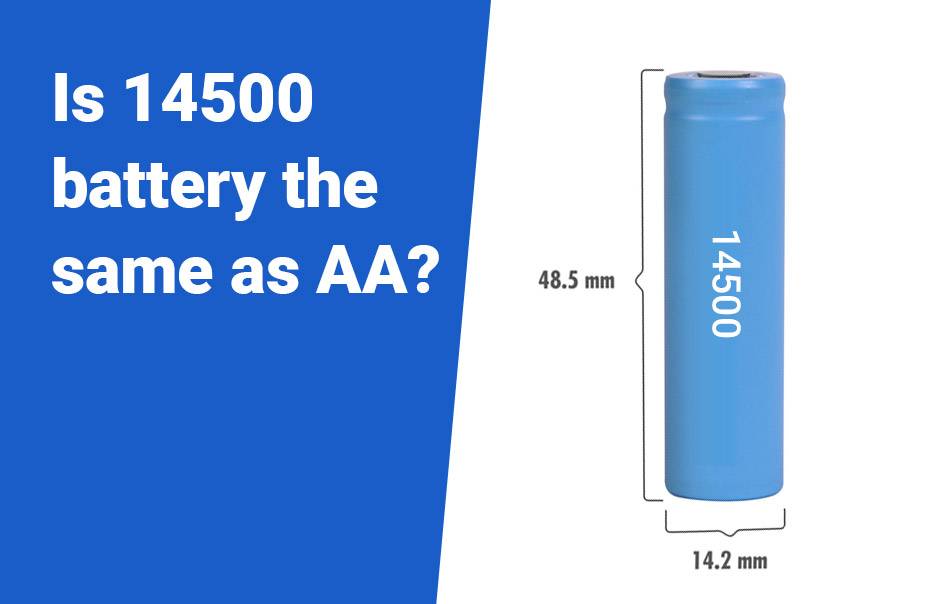
14500 Battery vs AA battery, Which battery is better?
What is the difference between 14500 and AA flashlight?
Flashlights designed for 14500 batteries and AA batteries differ in power source and performance characteristics. Here are the main distinctions:
- Battery Type:
- 14500 Flashlight: Tailored for 14500 lithium-ion rechargeable batteries with higher voltage (3.6/3.7 volts).
- AA Flashlight: Designed for AA batteries, typically with lower voltage (1.5 volts for alkaline or 1.2 volts for NiMH).
- Voltage:
- 14500 Flashlight: Operates at a higher voltage, potentially delivering brighter light.
- AA Flashlight: Operates at a lower voltage, resulting in potentially less intense light output.
- Brightness:
- 14500 Flashlight: Potential for higher brightness due to the higher voltage of 14500 batteries.
- AA Flashlight: Generally produces less brightness compared to 14500 flashlights.
- Rechargeability:
- 14500 Flashlight: Typically designed for rechargeable 14500 batteries.
- AA Flashlight: May use disposable alkaline or rechargeable NiMH batteries.
- Size and Form Factor:
- 14500 Flashlight: Designed to accommodate the slightly larger size of 14500 batteries.
- AA Flashlight: Fits standard AA batteries with a common form factor.
- Availability:
- 14500 Flashlight: Less common, as 14500 batteries are not as widely used.
- AA Flashlight: Widely available and commonly used in various devices.
Consider factors like brightness needs, battery availability, and preference for disposable or rechargeable options when choosing between a 14500 flashlight and an AA flashlight. Always check the manufacturer’s recommendations for compatibility.
Can I charge a 14500 battery in AA battery charger?
No.Charging a 14500 battery in an AA battery charger is not recommended due to voltage differences. While AA batteries output 1.5 volts, 14500 lithium-ion batteries produce around 3.7 volts. Using the wrong charger can lead to reduced battery life, potential damage, and safety risks like overheating. It’s safer to use a charger designed specifically for 14500 batteries.
- AA batteries usually output 1.5 volts, while 14500 lithium-ion batteries produce around 3.7 volts.
- Using the wrong charger can cause problems like reduced battery life, potential damage, and even safety hazards like overheating.
For safer charging and better performance, it’s best to use a charger specifically designed for 14500 batteries.
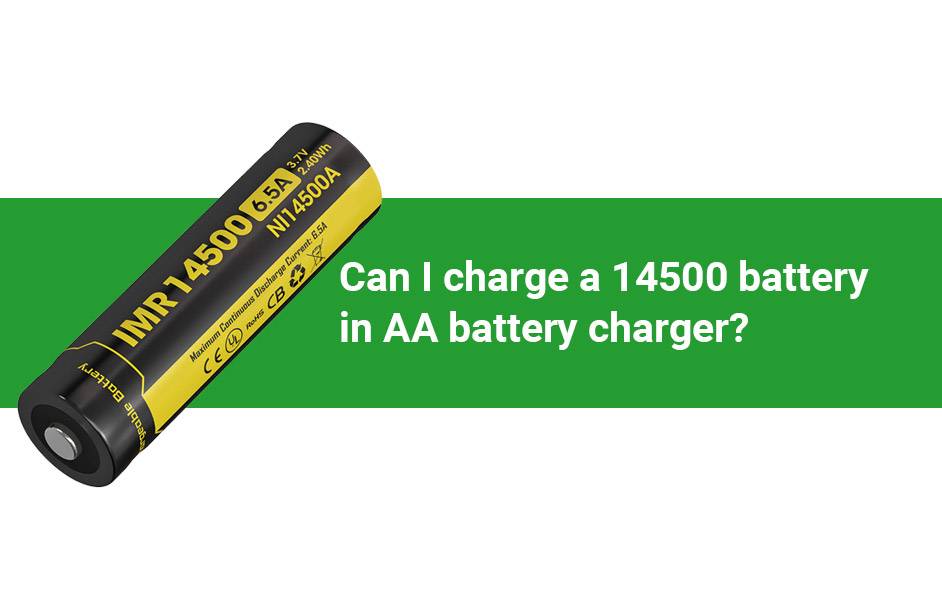
Who makes the best 14500 and AA battery?
That’s great to hear about Redway’s success in developing new 14500 and AA lithium batteries. If you’re interested in customized solutions, please contact us for more information on the scheme and a quotation. We look forward to assisting you with your battery needs.
Examples of Flashlights That Accept Both AA and 14500 Batteries:
Flashlights like the Olight S1R Baton II, Fenix PD35, and Nitecore EC11 can use both AA and 14500 batteries, offering flexibility in battery options and performance.
Are There 14500 Batteries Identical in Size to AA Batteries?
Yes, 14500 batteries are designed to be the same size as AA batteries (14mm diameter, 50mm length), but they are rechargeable lithium-ion cells with a higher voltage (3.7V) compared to AA batteries (1.5V).
Can You Use a Combination of 14500 and Dummy Cells in a 2AA Flashlight?
Yes, you can use a combination of 14500 batteries and dummy cells in a 2AA flashlight to maintain proper contact and fit. The dummy cells act as spacers or placeholders.
How Do Protected 14500 Cells Differ in Size from Unprotected Ones?
Protected 14500 cells include a built-in protection circuit to prevent overcharging, over-discharging, and short circuits, which makes them slightly longer (about 1-2mm) than unprotected 14500 cells.














